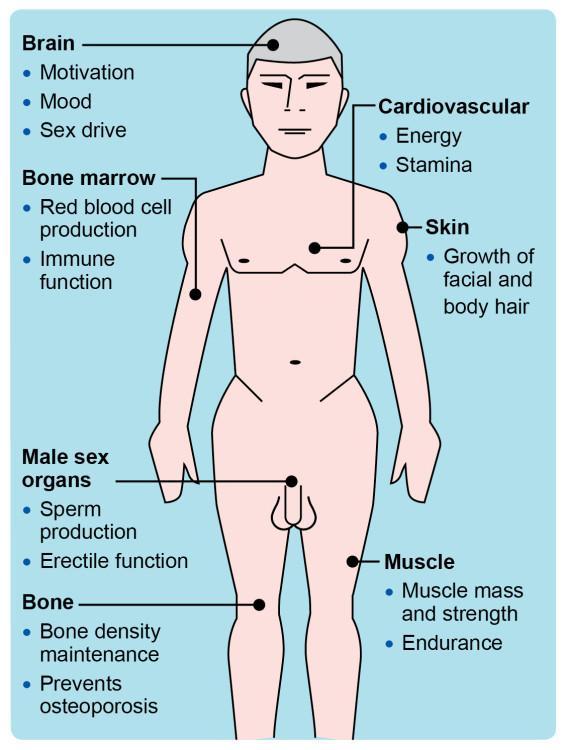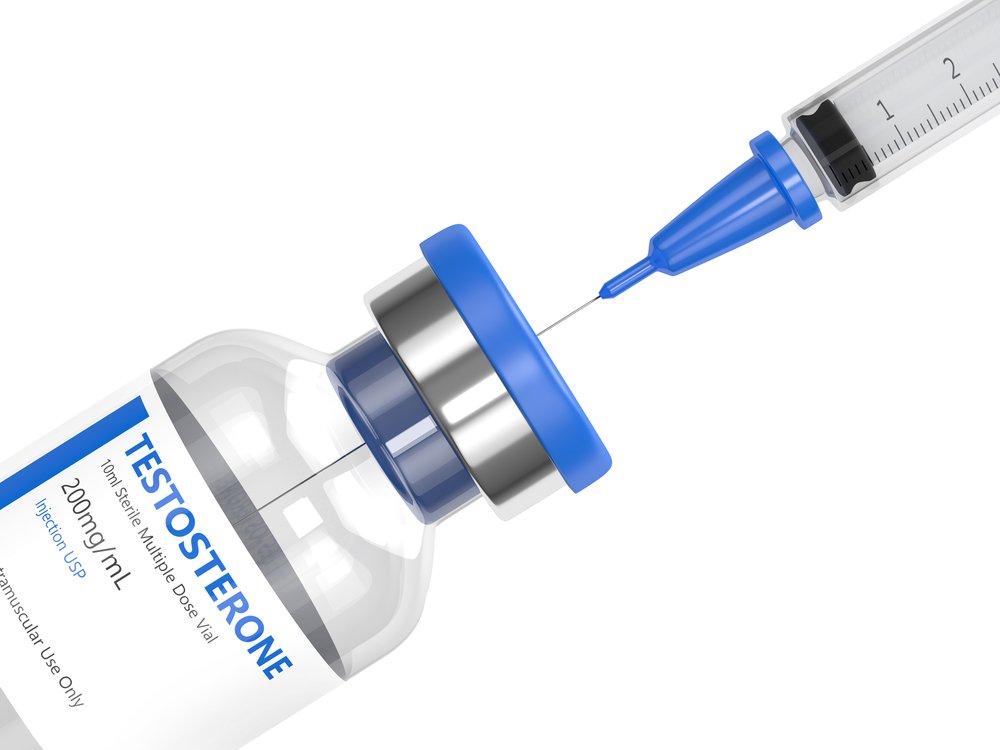As the sun begins its descent, casting a warm glow over the day, many individuals find themselves staring into the profound depths of their own intimacy. For some, the spark of desire that once illuminated their relationships may have flickered, leaving behind a shadow of longing and uncertainty. Low libido—a condition that affects countless men and women—can often feel like an insurmountable barrier, shrouding the joy of connection in a haze of frustration. Amidst the landscape of modern medicine, testosterone therapy has emerged as a beacon of hope for those grappling with this intimate struggle. This article delves into the intricacies of testosterone therapy for low libido, exploring its potential benefits, the science behind hormonal balance, and the nuanced conversations surrounding its use. Join us as we navigate this pivotal aspect of human experience, shedding light on an issue that, while deeply personal, is far from uncommon.
Understanding Low Libido and Its Causes
Low libido, or reduced sexual drive, can stem from a variety of factors that can significantly impact relationships and personal well-being. One of the primary biological contributors is the fluctuation of hormone levels, particularly testosterone. This hormone plays a crucial role in sexual desire among both men and women. Other physiological issues, such as chronic illnesses, medication side effects, or hormonal disorders, can also directly affect a person’s libido. Understanding these underlying causes is essential for effective treatment.
Psychological factors, including stress, anxiety, and relationship issues, contribute significantly to low libido. Individuals might experience a decrease in sexual desire when facing emotional upheaval or significant life changes. Additionally, lifestyle choices such as lack of exercise, poor nutrition, and substance abuse can exacerbate the issue. Addressing both the physical and psychological dimensions of low libido is vital, paving the way for options like testosterone therapy to help restore balance and improve overall sexual health.

Exploring the Role of Testosterone in Sexual Health
Testosterone plays a pivotal role in sexual health, significantly influencing libido and overall sexual function. Many individuals experiencing low libido may find themselves grappling with emotional and relational challenges. This can stem from hormonal imbalances, medical conditions, or even stress. Understanding the underlying causes of these issues is crucial, as they can often be mitigated or resolved through testosterone therapy. It’s essential to recognize that testosterone levels naturally fluctuate with age, and when these levels dip below a certain threshold, it can lead to diminished sexual desire and adverse effects on mood and energy levels.
Exploring testosterone therapy as a remedy for low libido involves recognizing the potential benefits and risks associated with treatment. Patients may have access to various methods of administration, including injections, patches, and gels, each offering unique advantages to suit individual needs. Considering factors such as dosage, timing, and method of delivery is paramount in ensuring effectiveness while minimizing side effects. Here’s a brief overview of common testosterone therapy options:
| Type of Administration | Description | Frequency |
|---|---|---|
| Injection | Directly administered into the muscle. | Every 1-2 weeks |
| Patch | Applied to the skin, releasing testosterone over time. | Daily |
| Gel | Topical application absorbed through the skin. | Daily |
Ultimately, pursuing testosterone therapy necessitates a comprehensive evaluation by a healthcare provider to tailor treatments to the individual’s goals and health status. Customized therapy can facilitate not just a revival of libido but also an enhancement of overall wellbeing, reinforcing the essential link between physiological health and sexual satisfaction.

Evaluating Testosterone Therapy Options
When considering testosterone therapy for low libido, it’s crucial to evaluate a variety of treatment options tailored to individual needs. Medical professionals often recommend different delivery methods, each offering unique benefits and considerations. Some popular forms of testosterone therapy include:
- Injections: Administered every few weeks, these provide a quick boost in testosterone levels, but may lead to peaks and troughs.
- Patches: Transdermal hormone patches can deliver a steady dosage over 24 hours, enhancing convenience and mitigating fluctuations.
- Gels: Applied daily, testosterone gels offer flexibility and the potential for consistent absorption through the skin, although they require careful handling to avoid transfer to others.
- Pellets: Implanted under the skin, these offer long-term treatment with less frequent dosing, making them advantageous for those preferring minimal maintenance.
It’s also essential to consider potential side effects and monitoring requirements associated with each therapy type. Patients should engage in a thorough discussion with their healthcare provider to weigh the benefits against the risks, ensuring informed choices. Below is a comparison of key factors for each option:
| Method | Frequency of Administration | Side Effects |
|---|---|---|
| Injections | Every 1-3 weeks | Pain at injection site, mood swings |
| Patches | Daily | Skin irritation, headaches |
| Gels | Daily | Skin reactions, risk of transfer |
| Pellets | Every 3-6 months | Infection risk at implantation site, irritation |

Benefits and Risks of Testosterone Therapy
Testosterone therapy can bring several potential benefits for those experiencing low libido. Among these advantages are:
- Improved Sexual Desire: Many men report a significant increase in their libido following testosterone therapy.
- Increased Energy Levels: Enhanced testosterone levels can lead to greater overall vitality and reduced fatigue.
- Enhanced Mood: Some individuals experience a boost in mood, which can positively impact personal relationships.
- Improved Muscle Mass and Strength: Testosterone therapy may help in building lean muscle, which can enhance physical confidence.
However, testosterone therapy is not without its risks. Potential side effects include:
- Cardiovascular Issues: There is ongoing debate about the link between testosterone therapy and an increased risk of heart attacks or strokes.
- Prostate Health: Elevated testosterone could potentially stimulate the growth of prostate tissue, raising concerns for those with existing prostate issues.
- Hormonal Imbalance: Over-treatment can lead to fluctuations that may result in other hormonal issues.
- Sleep Apnea: Some patients may experience exacerbated sleep apnea, a serious sleep disorder.
Lifestyle Changes to Enhance Libido Naturally
When seeking to enhance libido naturally, small yet impactful lifestyle changes can make a significant difference. Regular physical activity is essential; engaging in exercise not only boosts testosterone levels but also improves mood and reduces stress. Aim for a balanced routine that includes cardiovascular workouts, strength training, and flexibility exercises. Additionally, ensuring adequate sleep is crucial, as poor sleep can disrupt hormonal balance and diminish sex drive. Establish a calming nighttime routine to promote restful, restorative sleep, helping to reignite desire.
Nutrition also plays a vital role in sexual health. Incorporate foods rich in zinc and omega-3 fatty acids, as these nutrients help support testosterone production. Consider including the following items in your diet:
- Oysters – High in zinc, known for boosting libido.
- Fatty fish – Provides omega-3s that enhance blood flow.
- Leafy greens – Rich in magnesium, which aids hormone production.
- Nuts and seeds – Packed with healthy fats and nutrients.
Moreover, managing stress through mindfulness practices such as yoga and meditation can substantially elevate libido by balancing cortisol levels, thereby allowing testosterone levels to flourish. Making time for hobbies and nurturing social connections also contributes positively to your overall well-being and sexual health.
Monitoring and Adjusting Testosterone Levels
To effectively manage testosterone levels during therapy, it is crucial to engage in consistent monitoring. This includes regular blood tests to evaluate hormone levels and identify any fluctuations that may arise. As testosterone therapy can vary significantly in individual responses, healthcare providers often recommend monitoring at intervals of:
- Every 3 months during the first year of therapy
- Every 6 to 12 months thereafter
- More frequently if symptoms change
Adjustments to testosterone therapy may be necessary based on monitoring results. Factors that may indicate a need for change include symptoms of low libido persisting, or signs of excessive testosterone levels such as increased aggression or elevated blood pressure. Reviewing individual factors—such as age, overall health, and lifestyle—can help in tailoring the dosage and delivery method for an optimal outcome. A collaborative approach between the patient and healthcare provider ensures that the therapy is not only effective but also safe.
Consulting with Healthcare Professionals for Tailored Solutions
Seeking the expertise of healthcare professionals is crucial when considering testosterone therapy for low libido. Every individual’s body is unique, and a one-size-fits-all approach may not yield the most beneficial results. By consulting with a doctor, you can ensure that your treatment plan is tailored to your specific needs, taking into account factors such as age, overall health, and hormonal levels. A healthcare provider can conduct appropriate tests to confirm a diagnosis of low testosterone and can guide you through the various treatment options, making recommendations based on both medical history and lifestyle factors.
A healthcare professional can also provide insights into potential risks and benefits associated with therapy. Discussing concerns such as side effects, the impact of testosterone on other health conditions, and the necessary follow-up care can help you make informed decisions. Here are some aspects professionals might evaluate during your consultation:
- Hormonal Testing: Blood tests to measure hormone levels.
- History Review: Examination of medical background and symptoms.
- Potential Side Effects: Discussion on what to expect during treatment.
- Lifestyle Considerations: How your diet, exercise, and stress levels may affect treatment.
| Consultation Components | Description |
|---|---|
| Initial Evaluation | Review of symptoms and overall health. |
| Diagnostic Testing | Blood tests to check hormone levels. |
| Treatment Options | Discussion of various therapy methods available. |
| Ongoing Monitoring | Regular check-ups to assess effectiveness and adjust as needed. |
Q&A
Q&A: Understanding Testosterone Therapy for Low Libido
Q1: What is testosterone therapy, and how does it relate to low libido?
A1: Testosterone therapy involves the administration of testosterone, a hormone that plays a crucial role in male and female sexual health. Low libido, or diminished sexual desire, can be linked to low testosterone levels. By restoring hormone levels, testosterone therapy may help enhance libido in those affected.
Q2: Who is a suitable candidate for testosterone therapy?
A2: Suitable candidates typically include individuals experiencing symptoms of low testosterone, such as reduced sexual desire, fatigue, or mood fluctuations. However, it’s essential for candidates to undergo a thorough evaluation by a healthcare provider to rule out other potential causes of low libido.
Q3: What are the common forms of testosterone therapy?
A3: Testosterone therapy comes in several forms, including injections, patches, gels, and pellets. Each method has its benefits and considerations, allowing individuals to choose what fits best with their lifestyle and treatment goals.
Q4: Are there any risks associated with testosterone therapy?
A4: Yes, like any medical treatment, testosterone therapy carries some risks. Potential side effects may include acne, sleep apnea, increased red blood cell count, and fluctuations in mood. In some cases, there might be long-term risks, such as cardiovascular concerns. Consulting with a healthcare provider can help mitigate these risks through careful monitoring.
Q5: How long does it take to see results from testosterone therapy?
A5: Individuals may begin to notice changes within a few weeks, but it can take several months to experience the full effects. Improvements in libido, energy levels, and overall well-being often develop gradually as hormone levels stabilize.
Q6: Is testosterone therapy a permanent solution for low libido?
A6: Testosterone therapy is generally considered a long-term management option rather than a permanent solution. Many individuals may need to continue treatment to maintain desired symptoms. Regular follow-ups with a healthcare provider are crucial for adjusting dosages and assessing ongoing needs.
Q7: Can lifestyle changes impact libido and testosterone levels?
A7: Absolutely! A healthy lifestyle can significantly impact both libido and testosterone levels. Regular exercise, a balanced diet, adequate sleep, and stress management can contribute to improved hormonal health and sexual desire, complementing any medical interventions.
Q8: Are there alternatives to testosterone therapy for managing low libido?
A8: Yes, several alternatives may help alleviate low libido, including counseling, lifestyle modifications, and other hormonal treatments. Psychological factors, such as stress or relationship issues, may also benefit from therapeutic approaches. A healthcare provider can suggest the best options tailored to individual needs.
Q9: How can an individual start the process of exploring testosterone therapy?
A9: The first step is to consult a healthcare provider to discuss symptoms and undergo appropriate testing. A thorough assessment will allow the provider to determine whether testosterone therapy is a suitable option and to create a personalized treatment plan based on the individual’s health profile.
Q10: What is the takeaway message regarding testosterone therapy for low libido?
A10: While testosterone therapy can be an effective intervention for low libido related to low testosterone levels, it is essential to approach treatment holistically. Community support, lifestyle modifications, and open conversations with healthcare providers can empower individuals to achieve their best sexual health.
Closing Remarks
the journey through the landscape of low libido can often feel daunting, characterized by questions and uncertainties. Testosterone therapy emerges as a beacon of hope for many individuals grappling with this intimate concern, offering potential revitalization and a renewed sense of vitality. Yet, as with any medical intervention, it is essential to approach this path with caution, consulting healthcare professionals to tailor the treatment to your unique needs. Remember, the nuances of libido are as complex as the individuals who experience them. Whether you explore testosterone therapy or consider other avenues, what matters most is fostering open communication and understanding with your partner and healthcare team. Embrace the possibility of rediscovering your desires, and take the first step toward a more fulfilling intimate life – because every journey begins with a single decision to seek the answers that propel you forward.










